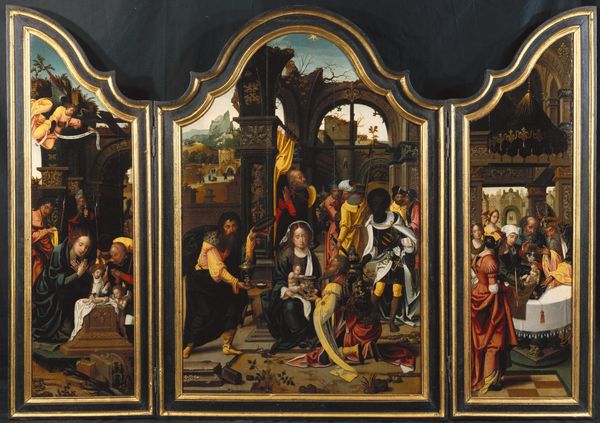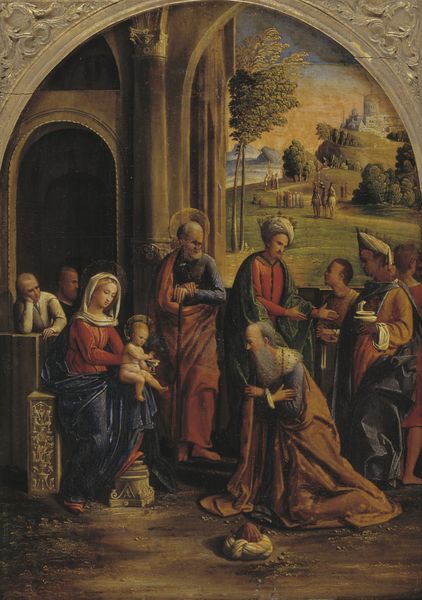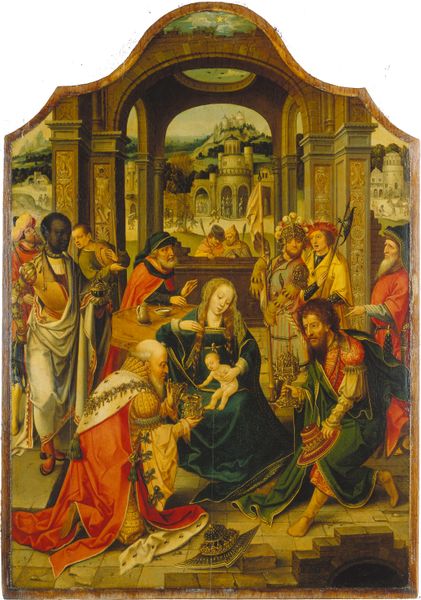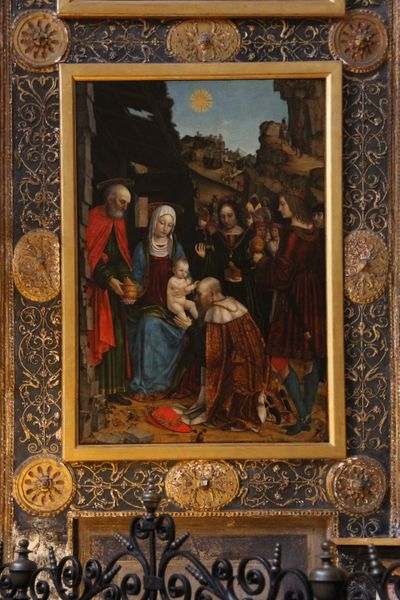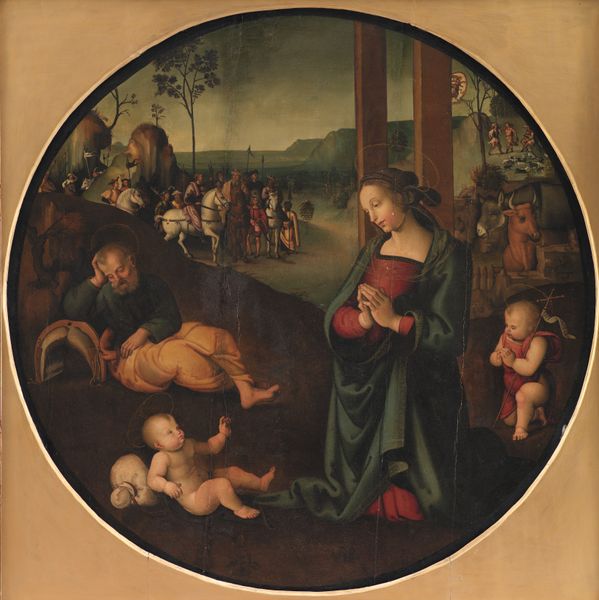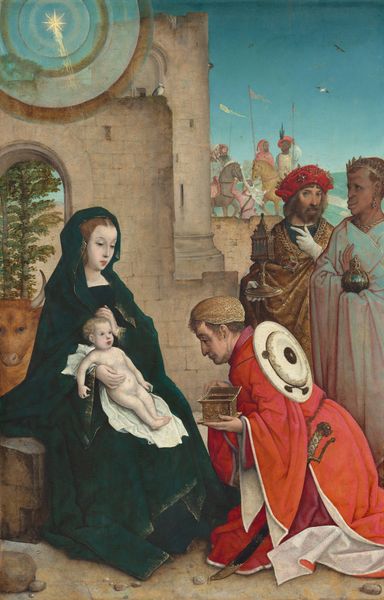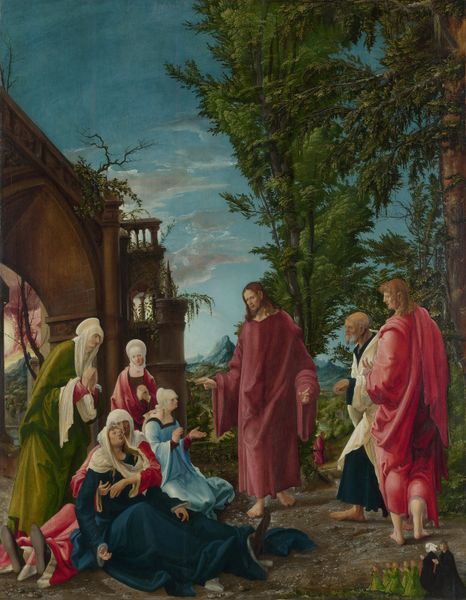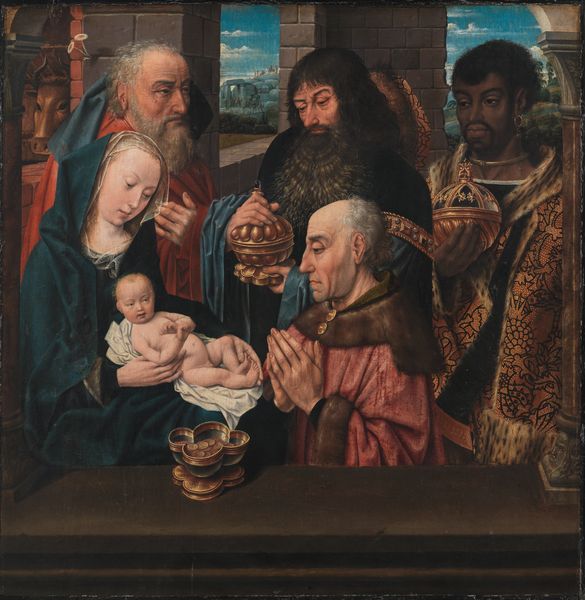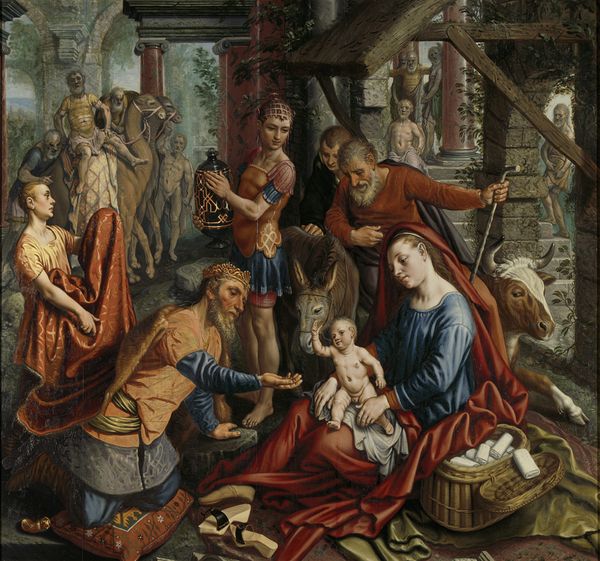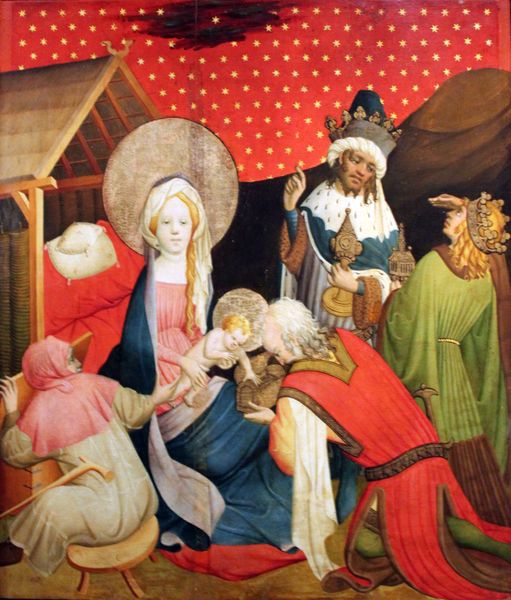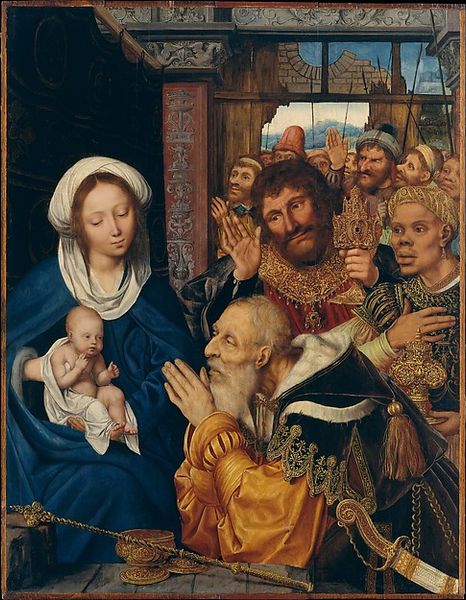
panel, tempera, painting
#
portrait
#
panel
#
allegory
#
narrative-art
#
tempera
#
painting
#
sculpture
#
figuration
#
group-portraits
#
history-painting
#
northern-renaissance
#
academic-art
#
italian-renaissance
Dimensions: height 86 cm, width 114 cm, height 84.5 cm, width 62 cm, height 86 cm, width 26 cm, depth 5.5 cm
Copyright: Rijks Museum: Open Domain
Curator: Before us is "Triptych with the Adoration of the Magi", a Northern Renaissance panel painting rendered in tempera, attributed to Bartholomäus Bruyn the Elder, dating from between 1520 and 1600. Editor: My first impression is one of compressed narrative. It's bursting with figures and details, almost overflowing the panel. Curator: Absolutely. Let's consider the construction as a triptych, its form a narrative device in itself. The central panel focuses on the Adoration, a well-known biblical scene but what about the left and right panels and how do these panels represent and reflect ideas of community identity? Editor: The eye is initially drawn to the figures, especially their meticulously rendered faces and gestures but structurally the linear perspective flattens the space and guides our gaze from one character to the next. Look at how the lines of sight connect them. Curator: These panels reflect Bruyn's social context; those on either side represent donors. Considering issues of religious reform and societal expectations during the northern Renaissance the group portraits underscore the role of patronage. Who is depicted and more importantly who is not depicted and what does this signify? Editor: I agree but consider also the distribution of color. The reds and golds are concentrated in the central panel, framing the key action of the Adoration. That contrasted with the subdued palette of the wings really guides the eye. Curator: And those garments! They aren't just pretty clothes, consider them socio-political indicators! Every thread screams class, status, and cultural affiliations. And while we discuss composition, consider how the gaze of marginalized figures might be constructed in contrast to the presumed viewing demographic of the period. Editor: Precisely! And those kneeling figures – the formal rendering emphasizes the compositional harmony. Even within the larger narrative framework, the triptych operates as a self-contained visual system of repeated angles and mirrored gestures. Curator: By interlacing art history and identity theories, we expose power dynamics, not only within the work, but in relation to us, the modern viewers. Editor: Focusing on its structural components allows us to understand the intent. We get past just 'seeing' the piece and analyze it’s symbolic construction and material manifestation. Curator: Understanding art, regardless of era, obliges us to dissect societal assumptions and values of our past that may shape our present. Editor: It certainly asks for continuous refining, viewing, deconstructing, seeing—both then and now.
Comments
No comments
Be the first to comment and join the conversation on the ultimate creative platform.
